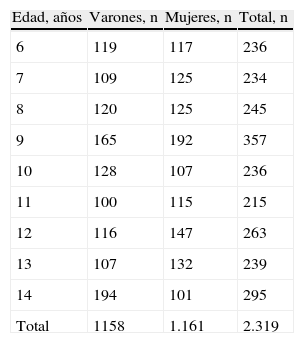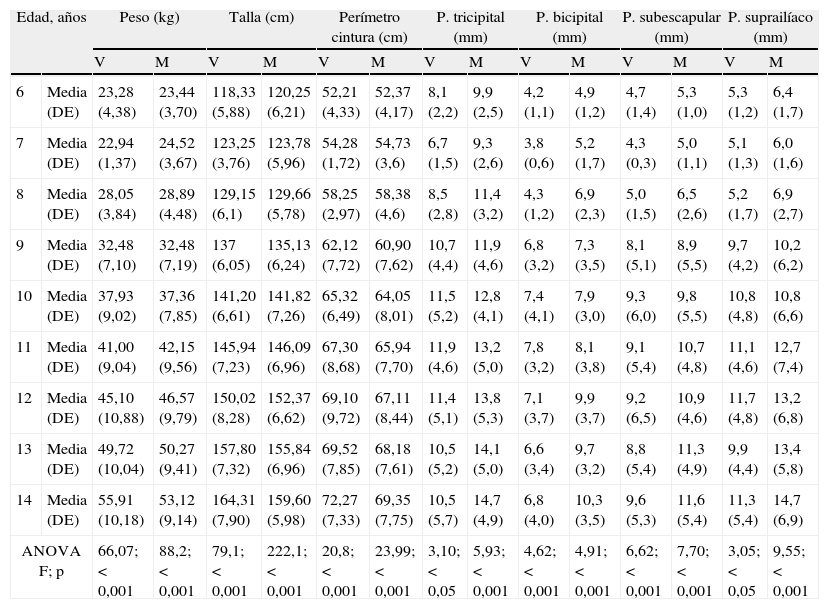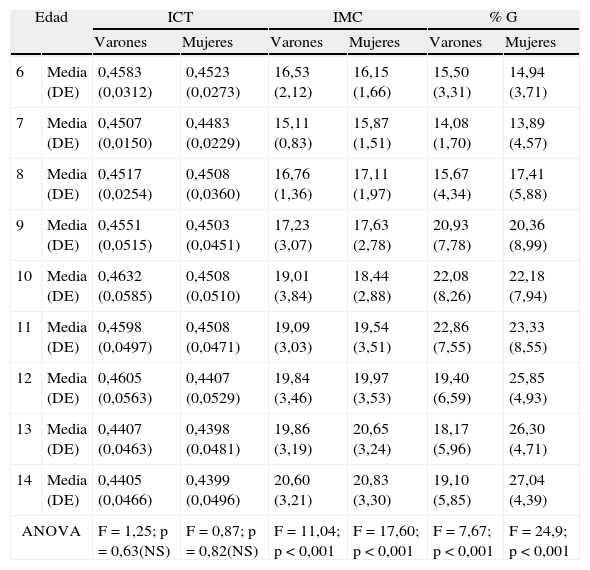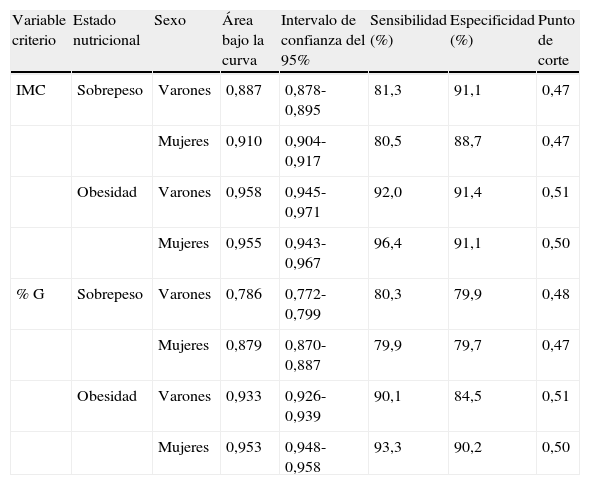El objetivo del presente trabajo es explorar la sensibilidad y especificidad del índice cintura-talla (ICT) para la identificación del sobrepeso y la obesidad infantil, obteniendo puntos de corte que simplifiquen el diagnóstico.
Sujetos y métodoSe analizaron 2.319 escolares de 6 a 14 años, tomando talla, peso, perímetro de la cintura y pliegues subcutáneos. Se calcularon el ICT, el índice de masa corporal (IMC) y el porcentaje de grasa. Mediante ANOVA se evaluó el comportamiento de las variables durante el crecimiento. Se aplicaron curvas ROC (Receiver Operating Characteristics) tomando como variable prueba el ICT y como criterio el estatus de sobrepeso u obesidad evaluados mediante estándares de IMC y adiposidad. Se obtuvieron la sensibilidad y especificidad, las áreas bajo la curva y los puntos de corte de ICT que diagnostican sobrepeso y obesidad. El procedimiento estadístico y gráfico se llevó a cabo mediante el programa SPSS® 18.0.
ResultadosEl ICT no varía con la edad. Las ABC alcanzaron valores entre 0,786 y 0,953, indicando que el ICT tiene un alto poder predictivo para identificar los sujetos clasificados con sobrepeso u obesidad por los 2 criterios considerados.
ConclusiónEl ICT resultó ser un buen marcador del sobrepeso y la obesidad en niños entre los 6 y 14 años. Los puntos de corte que identifican la obesidad son 0,51 en los varones y 0,50 en las niñas. Para el sobrepeso, oscilan entre 0,47 y 0,48 dependiendo del sexo y la variable tomada como criterio.
To explore the sensitivity and specificity of waist to height index as indicator of overweight and obesity in pediatric age and to obtain cut-off points to simplify the diagnosis.
Subjects and methodsTwo thousand and three hundred and nineteen schoolchildren between 6 and 14 years were analyzed. Anthropometric measures were taken (height, weight, waist circumference and skinfolds thickness), and waist to height ratio (WHR), BMI and fat percentage were calculated. ANOVA test was used to evaluate the performance of anthropometric variables during the growth period. ROC curve analysis (Receiver Operating Characteristics) was applied using WHR as test variable and overweight and obesity status as criterion variable. Overweight and obesity were defined by BMI standards and adiposity references. The sensitivity and specificity values, areas under the curve (AUC), confidence intervals 95%, and cut-offs points were obtained. The statistical and graphical procedure was performed using SPSS® 18.0.
ResultsWHR does not vary with age. AUC ranged from 0.786 to 0.953 indicating that the WHR has a high predictive power to identify the subjects previously classified as overweight or obese using both considered criteria.
ConclusionWHR proved to be an appropriate and effective predictor of overweight and obesity in children between 6 and 14 years. Cut-offs points of WHR that identify obesity are: 0.51 in males and 0.50 in girls. For the overweight, cut-offs range between 0.47 and 0.48 depending on sex and the criterion variable.
Artículo
Comprando el artículo el PDF del mismo podrá ser descargado
Precio 19,34 €
Comprar ahora












